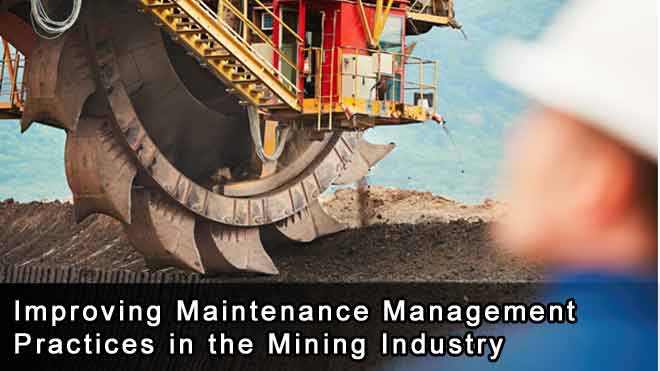
The mining industry is heavily asset-intensive and requires a lot of heavy work. Generally, there are four classifications in mining – underground, surface, placer, and in-situ, requiring different equipment for different processes.
Machines and equipment used within the mining industry are hardly ever replaced. Often, these equipment and machines take up a substantial amount of the total investment made. It is crucial to ensure that the machines and equipment used for different purposes are in good working condition.
Hence, proactive maintenance is critical to avoid any unforeseen breakdowns. The mining industry is densely reliant upon revenue-producing assets. By minimizing asset downtimes, companies can produce outputs more consistently and increase their revenue. This is where maintenance plays an important role.
The mining industry is also highly regulated, with amplified requirements for safety and environmental processes. As workers work in highly hazardous conditions, the safety of these workers must always come first. Proper upkeep and maintenance of assets can contribute to the well-being and safety of all the workers working in the field.
Leading organizations within the mining industry know how to maximize their assets’ performance, and therefore, can control costs more efficiently. Most progressive mining companies have minimized reactive maintenance and downtimes by implementing effective processes and solutions.
Solutions that are essential for maintenance management and that will help you comply with safety and environmental regulations. Popularly, many organizations utilize a computerized maintenance management system (CMMS).
Read Also: Tradesmen vs Handymen- What’s the difference?
Maintenance is often a “necessary evil” within the mining industry. Ineffective maintenance management can result in a substantial financial loss for any company. However, scheduled maintenance must be brief and effective because equipment and machines are almost always in use due to continuous production.
Improving maintenance in the mining industry
Unlike any other industry, the mining industry has distinct maintenance requirements related to environmentally hostile and extreme climates, backlogs of work orders, increased safety regulations, and large capital expenditures.
Additionally, machines used in the mining industry are more complex and often large, like medium-sized buildings. These needs pose unique challenges to the maintenance teams striving for world-class maintenance practices.
Monitoring changes in asset health
Imminent equipment failures or changes to assets’ health can critically affect a company’s bottom line. Maintenance teams need to be able to access and monitor machine data to get a good grasp on cost control.
Early identification of problems helps maintenance teams to react quickly and solve problems, ultimately preventing unpredictable and costly breakdowns.
What’s more, mining organizations are required to avert safety and health risks to comply with various regulations. Monitoring asset conditions and predictive shutdown systems are vital for ensuring safe and secure operations in hostile working environments.
See Also: How to Optimize Your Online Shop With Data Mining
Equipment uptime requirements and performance goals
A mining plan should specify uptime requirements and performance goals. Mining operations are heavily dependent on the condition of capital assets. If these assets do not function as expected, organizations will fail to meet their performance goals.
Leveraging the availability of assets, such as bulldozers, trucks, processing plants, and distribution equipment is crucial for dealing with increased production as more and more resources are being extracted from mines to meet rising demand. Maintenance teams are responsible for ensuring that these assets are available during necessary production periods.
Streamlining work orders
Maintenance teams in a mining organization often receive large requests for work orders. Maintenance teams must streamline bulk work order requests and view and track KPIs to meet weekly maintenance schedules.
With the large number of work requests that maintenance teams receive, they need a system that tests the readiness of unscheduled work orders and flags those that do not meet a satisfactory level of maintenance.
Maintaining quality
A decline in production quality will directly affect mining operations. Low-grade mining operations are much more process-intensive. It requires making more effort from the operating units to achieve as much as a high-grade mining operation. Low-grade operations must work at optimal capacity through easy planning, scheduling, and overall maintenance process optimization.
Breaking barriers to remote locations
Some of the best mines in the world are in highly hostile environments and remote locations. These extreme conditions pose unique challenges for mineworkers, as well as the maintenance teams.
Breaking down geographical barriers and access to actionable information can be difficult if maintenance teams do not have the right tools and resources to connect with the production environment. It’s only possible to achieve world-class maintenance practices when teams have access to actionable data.
Health and safety compliance regulations
There are local, industry, and global health and safety regulations that dictate how organizations should ensure a safe working environment.
Safety in the mining industry continues to be a pressing concern. There are fatalities every year, and one of the most effective ways to ensure safety is to monitor asset conditions, control production, and implement predictive shutdown procedures.
Wrapping Up
The larger the investment, the greater the responsibility. And as an organization, you have to ensure workers are not exposed to safety hazards and that all the machines and equipment are functioning appropriately. Machine downtimes are directly proportional to production outputs, which also affects profitability.
To achieve world-class maintenance practices, you need a world-class maintenance automation system. Try incorporating a computerized maintenance management system (CMMS) into your operations and see if you are experiencing any improvement in cost control and the lifecycle of your assets.







